Alright – so today we’ve got the honor of introducing you to Jas Mardis. We think you’ll enjoy our conversation, we’ve shared it below.
Jas, appreciate you joining us today. What’s been the most meaningful project you’ve worked on?
Well, my most meaningful project, to date, has been “Let The Tablecloth Speak: The Embedded DNA of Heirloom Linens”. It is an exhibition of 13 quilts made from a single, heirloom, cut-work tablecloth handed down from my 105 year old great Aunt, Roseanna Harris, whose home we gathered at in my formative years. I cut the tablecloth into the sections where family members, extended family and friends had sat or been remembered sitting throughout the years. Some are large, others are just slivers or squares of the tablecloth, but all carry the oratorical and physical DNA of those lives into a quilted piece that carries their image and a narrative poem of their story. This exhibition has other elements, like a table in the center that holds bonding elements, such as, an iron coffee pot, family Bible, a statue of a kissing couple, made from items from ‘The What-Not (to touch) Shelf”, a domino game in progress and three cups that denote the stages of “greeting”.
The three stages of greeting are displayed as: “welcome”: an upturned cup on a saucer; “thank you for coming”: a downturned cup on the saucer; and “your plate is broken here”: an overturned cup with a missing saucer. Leading into the table is a “floor quilt”, a tattered quilt that has been patched over Aunt Roseanna’s, “BigMama’s”, life, one edge raw, batting exposed and the images of other family members patchworked throughout the quilt as a representation of all the lives and DNA hidden within its fibers. The floor quilt extends into the darkened underbelly of the dining table and speaks to the hearts and fading memories of the current family. The 13 quilts hang around the table, like stained-glass windows projecting their colored stories into the room. Around the room is an assortment of remembrances: the cast iron black trilogy of banks: Aunt Jemima, Uncle Moses, the Driver/Butler, and Uncle Ben, The Cook; an oval framed colored portrait of an ancestor; a Brownie camera with black and white photographs; and an iron framed house with stalks of cotton and quilt fragments pouring from its’ walls.
The iron house is a symbol of the stability of this gathering place. The stalks of cotton and quilt fragments are the backbone of this family’s sustaining essence. Hidden within the iron house is a light activated playback device that is activated when visitors pass thru the exhibition and plays back snippets of the recorded stories displayed on the quilts. As patrons make their way thru the exhibition, reading the quilts, taking in the images, narratives and the language of the table; the original voices, like the images on the quilts embody the space. If two patrons break the light of the hidden playback device, then, the storytellers “overtalk” each other and fill the space with the experience of being home.
At one point there is the story of “The Girl Who Eloped Next Door”” being interlaced with the barren neighbor declaring, “I’ll Take The Child” of my 13 year old great Grandmother in 1922. Behind those ladies speaking is my great Uncle John being remembered for having left the South and being lost forever. His story overtaken by another, fair-skinned Uncle. He was mistreated his entire life for his blonde hair and blue eyes, but called upon to rescue the town when their Louisiana town refused to sell the Negroes ammunition ahead of a planned riot to destroy the prospering Freedsman settlement. Another conversation emerges about the mysterious Trickster. Another story of a child walking too near the hearth is spelled out in a Western Union message. A broken marriage. A “monkey in uniform” returns from the War. A missing Father is sketched by his children onto the water-warped surface of the table-turned-cooling board. As the patrons spin away from the cacophony of images and voices they are met with one final quilt. A ghostly image encircled with a the yarn of a well-used apron, stands on a screened porch and oversees the generational children, cousins and such in the yard. They play their games but always come back to the porch with their heartfelt query: “BigMama…were you a slave?” From the quilted piece she answers, “No child, but I seen it”
I’m a Storyteller in all of the artistic machinations that I do. This exhibitions allows me to take the story and bring it to a relevance that gets ignored in the entertainment driven ways of the modern world. I wanted to ask a question about gathering and remembrance that challenges our understanding of the act. The value of remembering those who have come before you is seeing how their existence has shaped you and will shape the way forward.
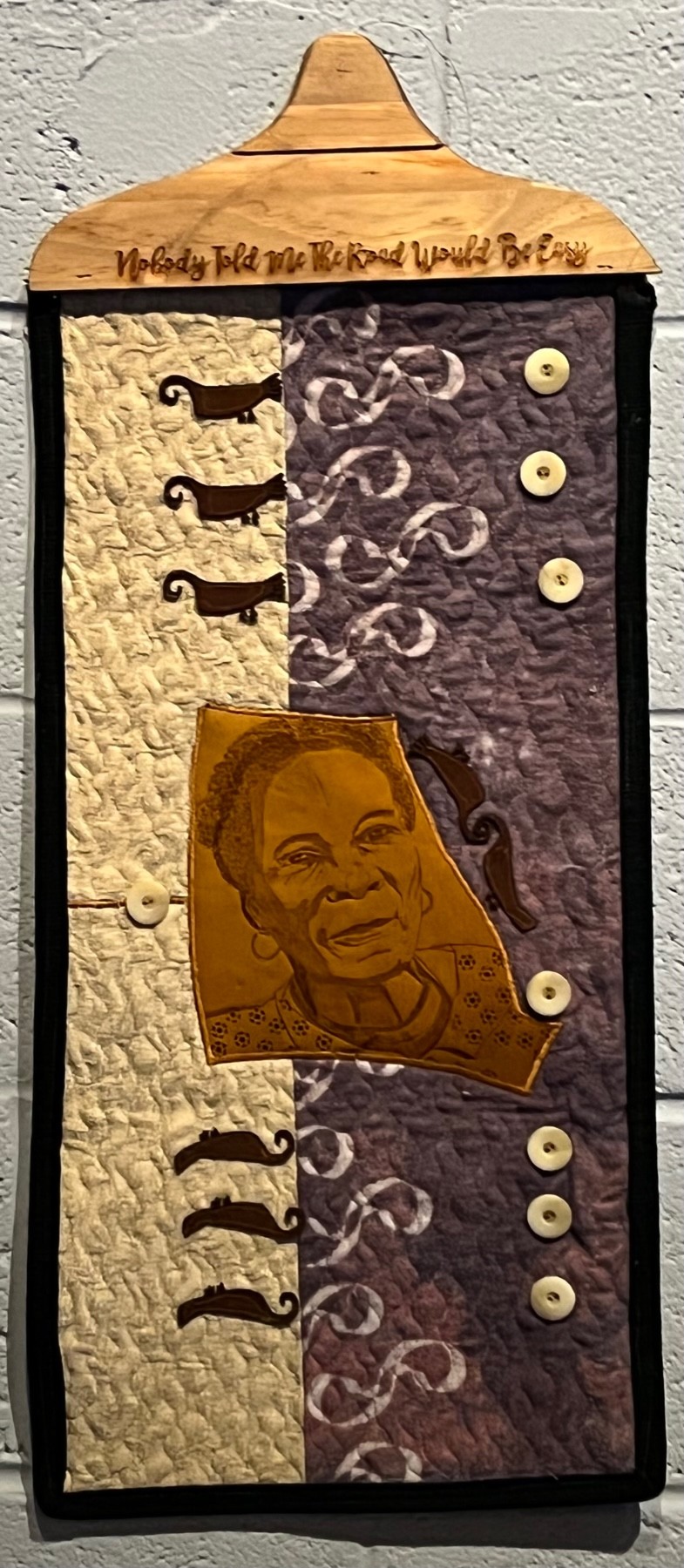


Jas, before we move on to more of these sorts of questions, can you take some time to bring our readers up to speed on you and what you do?
Sure, I am sixty years old, but a long time ago, back in my teens I was asked by my school Counselor, Ms Barbara Bostic, after an incident with an unfortunately ignorant and racist Math Teacher, to write my feelings out. After reading what I had written, she submitted that writing to an Editor at The Dallas Post Tribune and it eventually became, “One Man’s Opinion of Black Advancement”. Nobody knew I was 13 years old and the response to the column led to a host of writing and speaking opportunities. I won a poetry prize at The Lakewood Public Library and a few other prizes soon afterward. Marquetta and John Herring of the legendary Paperbacks Plus Books really took me into that literary community. Another wonderful English Teacher, Ms. Mona Gedney, at O.W. Holmes Middle School, then later at F.D. Roosevelt High School in Dallas, fostered my poetic voice. Others, like the late, Ms. Cathen Jones fed me a diet of challenges to write, speak and tell the unique story that they saw built up in me. From that humble start it is just a host of dynamic opportunities that kept me on the writing and poetic paths.
Two legendary and very significant Bookstores and owners in Dallas: Patty Turner’s, Shakespeare Books (lower Greenville) and Black Images Books (Oak Cliff) with Ms. Emma Rogers and Ms. Ashira Tosewe; and Ms Kay Cattarula of the DMA’s Arts and Letters LIVE fame are among the dynamic people who allowed my Writer’s Voice to emerge thru the years. I was picked up by Jim Lee and Fran Vick from the Center for Texas Studies at the University of North Texas Press for their expansive work with African American Writers; Professor Billy Bob Hill and his excellent efforts with Texas Letters and First Lady Laura Bush’s 1996 First Texas Book Festival: A Gathering of Literary Stars. As a consequence of these exposures I was invited by KERA 90..1fm to join their list of Radio Commentators in the 90’s for Morning Edition with Sam Baker. Later I was a member of the late Glen Mitchell’s “Brain Trust” and other literary followed that has led to my induction in 2014 to The Texas Literary Hall of Fame.
At the same time that the writing life was underway there were the artistic endeavors being nurtured by people like Dr. Harry Robinson of The African American Museum and Ms. Tisha Crear of the legendary Reciprocity (now of Recipe Oak Cliff). Dr. Robinson embraced my quilting early on with an invitation to do a stage event where I waxed poetic with stories of my family quilts. The oral presentation led to a four year Neighborhood Touring Artist program, The Family Story Project, with The City of Dallas Cultural Arts Department. I toured the city with programs that showed participants how they can used the memory of items in their home to remember and tell the family story. Many of the people in Dallas will know me in one of these capacities or in my role as Cultural Stage Coordinator for the old Dallas Black Arts Festival that used to happen in the area known now as The Annette Strauss Square; The Black Filmmakers Showcase in 2000 for the 20th Anniversary American Film Festival; various literary endeavors or possibly thru Gifted Student Institute at SMU where I lead a three week workshop on Public Discourse with their young students for ten years.
In large measure I don’t see a separation of these talents. The storytelling is the same as the quilting, just a different medium. In my current practice I draw portraits on leather with a burning tool, like a soldering iron. In the same manner that I use a photographic process to develop images onto fabric for the Tablecloth series, I used leather to draw the images out of the leather. I use words to construct narratives and draw images from the reader’s mind and familiarity. Everything that I have created and will create, for that matter, is delivering on the promise of memory. It is the gift of both my Grandmothers. My Mother’s Mother was a deserving teller of stories and brought me along thru her savory recitations of the people and places that shaped her. We planted tomatoes in her garden and fried them for my Grandfather’s breakfast, then they both plied me with stories at the table. My Father’s Mother was a silent, pensive concentration in her way. She saved me quilt piecing patterns from years of newspaper clippings and she was patient in my sewing those pieces. In 2019 I was honored to be chosen by Swarthmore College as one-of-ten Quilters for “A Response To Gees Ben”, the famed community of poor, landlocked Quilters with generational aplomb. Ms Mary Lee Bendolph’s comment to me that I piece like a community member was a badge of honor to my Grandmother’s legacy.
What’s the most rewarding aspect of being a creative in your experience?
The most rewarding aspect of being a Creative is simply that I get to experience the kinship created by sharing my work. It is a kinship that transcends race and gender. During the exhibition of “Let The Tablecloth Speak” I was forever being supported in my journey by the tears of patrons. The last exhibition was at the Fine Arts Floor at the Main Library in Downtown Dallas and ran for the two months preceding the start of the Pandemic. In that time I would be present on weekends and one or two days during the week, randomly. Each time I entered the space I found people waiting for the chance to encounter. Some patrons, I was told by staffers, came every day for the off chance to tell me how much the exhibition impacted their lives. There would be complete strangers hold each other and taking in the piece about the girl who walked too close to the hearth and was consumed in a fire of her night dress. Another patron brought his Army medal to show me after seeing the piece about my Uncle who was attacked as he got off the Greyhound Bus in his Army-Airforce uniform and walked home in ElDorado, Arkansas. There is no greater reward than knowing that you are true to the story. One Sunday afternoon a White patron asked if he could show me something on the piece, “Has Anybody Heard From Uncle John?”, and when we arrived at the piece he began to sob and pointed at a section in the narrative that says, “…always warm and first at the table…always getting under MaDear’s fancy quilt”. “That’s ME, Mister James. I haven’t been back home in forty years. I’m gong back now. Thank You!”
There are many nights when I question myself and my creative process and materials. The one thing that I don’t question is the story. Listen to the stories of your creativity and you will know go wrong. Of course, I am a creative from that side of the fence, so maybe my advice will be lost on the wandering creative soul.
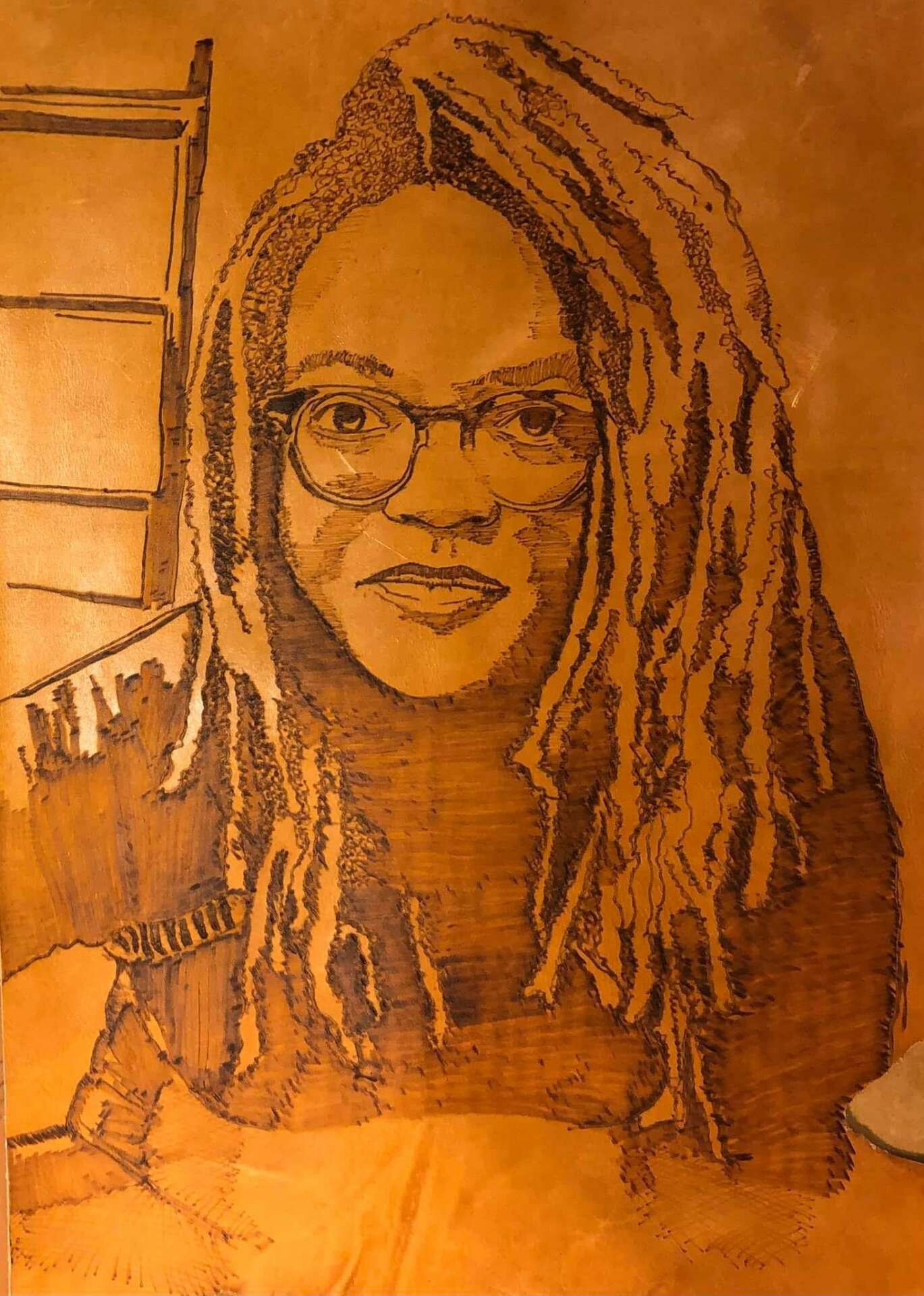
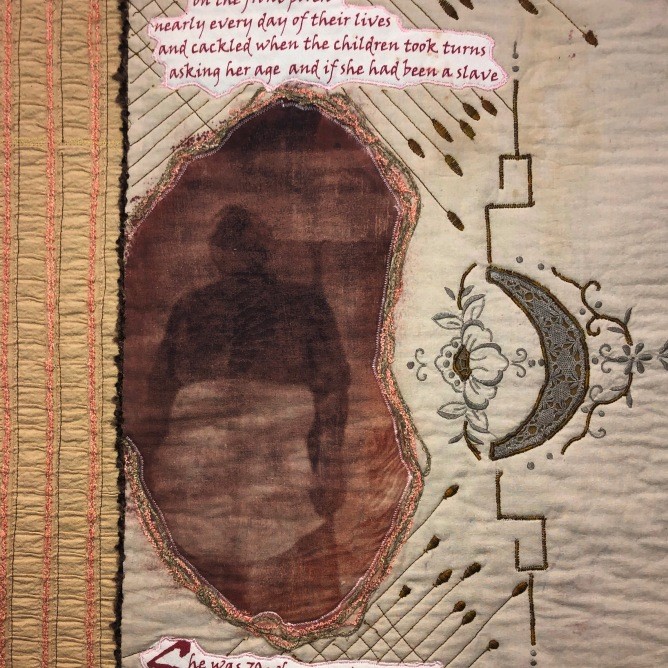
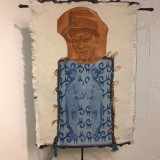
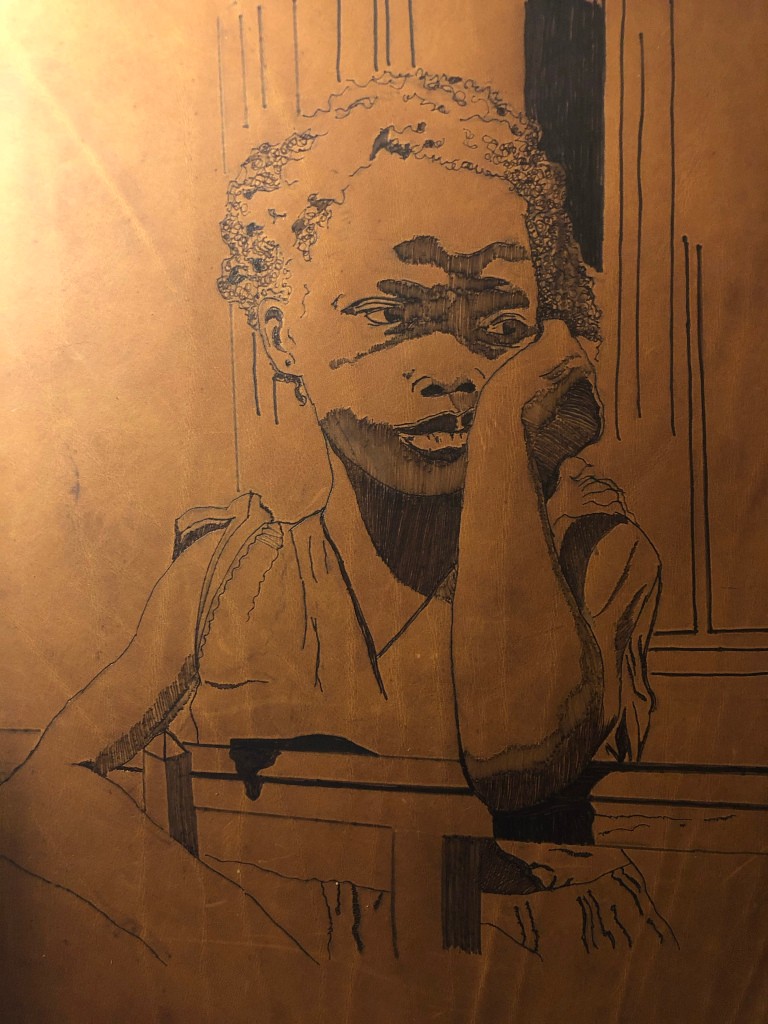
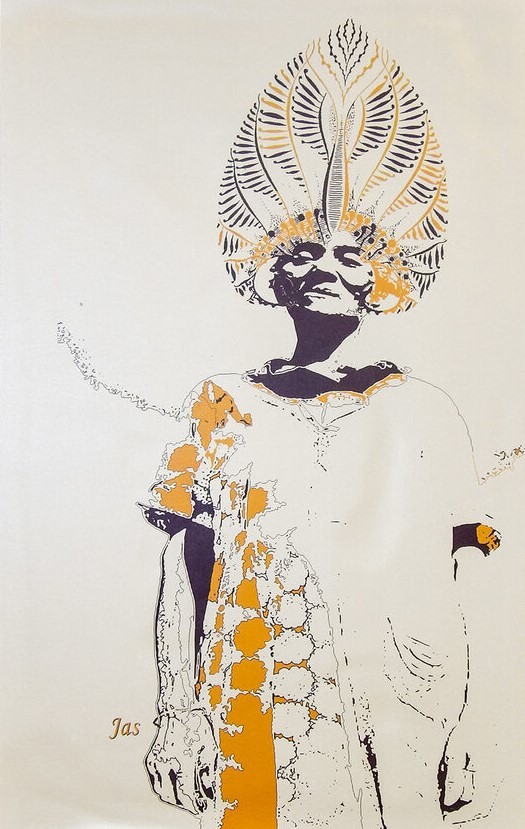
We often hear about learning lessons – but just as important is unlearning lessons. Have you ever had to unlearn a lesson?
Because I work in paper, fabric, leather, metals and wood, there is a constant nagging mistrust of that variety in regards to marketing. I see other Creatives that easily sell their single medium art and reproductions and wonder if I should lock into a media. However, for me it is a far greater benefit to watch the created piece take on a life of its’ very own within the media of choice. I reuse/repurpose 90 percent of the materials in my practice. Because I believe the DNA within a discarded shirt is not the same as the DNA in the grooves of a well swung axe, I had/have to resolve to tell the story of each piece. Now, in those thin years when sales or the compensated exhibition had me financially on edge, my artistic morals waned a bit and I went with paper as an affordable, repeatable media, but I hated it. My soul did not appreciate the inner battle and I have decided to stay true to the chosen medium for the work being presented. If a piece is conceived in leather then that is what I offer, exclusively. If it markets, then good. If it fails to market, then good. I have a very dear friend who tells me that I’d really rather talk about a piece of art than sell it. She goes on to say that my future homeless dud shopping great will be fantastic!
Contact Info:
- Website: http://JasMardis.com
- Instagram: Jas Mardis
- Facebook: Jas Mardis
- Linkedin: Jas Mardis
- Youtube: JasMardisArt


